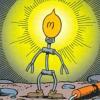Dear all,
I am designing a total of 5 distillation columns to separate pyrolysis oil into petrol/diesel/benzene/heavy-hydrocarbons.
The reason for 5 is so that the strict properties of petrol can be upheld.
My question is for initial design, how do I select temperatures for the Feed, Before/after condenser and before/after reboiler.
I need these temperatures to complete an energy balance.
For the feed I was going to keep it as liquid at its boiling point and therefore just find the temperature of the stream by using the individual components boiling points. Lets call this temperature; X.
Would I be right in assuming that the temperature of the column is the same throughout? And therefore before the condenser the temperature is also X. Therefore if I use a total condenser, then I just remove the sensible heat and latent heat using the condenser until the stream is now at its new temperature which makes it liquid at its boiling point? Say, X2.?
Would you recommend this?
How should I go about deciding on temperatures of the distillate and bottom?
Any help in the right direction would be greatly appreciated.
I'm really sorry about the explanation, i'm not sure if this will make sense.
Kind regards,
Luke

 FB
FB














